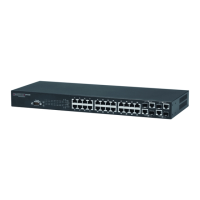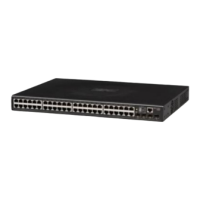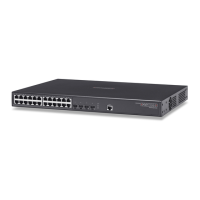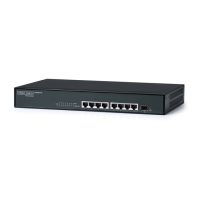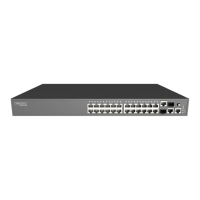F
IGURES
– 32 –
Figure 32: Configuring Remote Port Mirroring (Intermediate) 127
Figure 33: Configuring Remote Port Mirroring (Destination) 128
Figure 34: Showing Port Statistics (Table) 131
Figure 35: Showing Port Statistics (Chart) 131
Figure 36: Performing Cable Tests 133
Figure 37: Configuring Static Trunks 134
Figure 38: Creating Static Trunks 135
Figure 39: Adding Static Trunks Members 136
Figure 40: Configuring Connection Parameters for a Static Trunk 136
Figure 41: Showing Information for Static Trunks 137
Figure 42: Configuring Dynamic Trunks 137
Figure 43: Configuring the LACP Aggregator Admin Key 139
Figure 44: Enabling LACP on a Port 140
Figure 45: Configuring LACP Parameters on a Port 141
Figure 46: Showing Members of a Dynamic Trunk 141
Figure 47: Configuring Connection Settings for Dynamic Trunks 142
Figure 48: Displaying Connection Parameters for Dynamic Trunks 142
Figure 49: Displaying LACP Port Counters 144
Figure 50: Displaying LACP Port Internal Information 146
Figure 51: Displaying LACP Port Remote Information 147
Figure 52: Enabling Power Savings 149
Figure 53: Enabling Traffic Segmentation 150
Figure 54: Configuring Members for Traffic Segmentation 151
Figure 55: Configuring VLAN Trunking 152
Figure 56: Configuring VLAN Trunking 153
Figure 57: VLAN Compliant and VLAN Non-compliant Devices 156
Figure 58: Using GVRP 158
Figure 59: Creating Static VLANs 159
Figure 60: Modifying Settings for Static VLANs 160
Figure 61: Showing Static VLANs 160
Figure 62: Configuring Static Members by VLAN Index 163
Figure 63: Configuring Static VLAN Members by Interface 164
Figure 64: Configuring Static VLAN Members by Interface Range 165
Figure 65: Configuring Global Status of GVRP 166
Figure 66: Configuring GVRP for an Interface 167
Figure 67: Showing Dynamic VLANs Registered on the Switch 167

